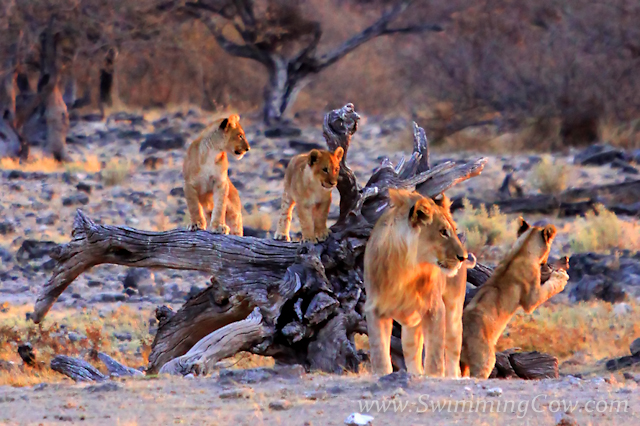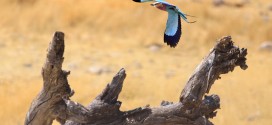More so than for almost any other type of trip, camera gear selection for a safari trip needs to be precise. Unlike city vacations or beach holidays, on safaris your movement will be severely limited. Most of your time will be spent on a truck for game viewing, the animals will be very far away, and there will be very few opportunities to maneuver around to adjust your photo angles or composition.
So if you are serious about going home with great pictures of amazing wildlife, plan your camera gear carefully. Really, there is nothing worse than friends squinting at a photo you took and go, “Wait, so which pixel is the cheetah??”
Here’s a list of recommended photography gear and why you should consider packing them for your safari trip.
Camera body
Camera lens
- Telephoto lens:
Canon 70-300mm f/4-5.6 L IS or Canon 100-400mm f/4.5-5.6 L IS - General purpose lens:
Canon 24-105mm f/4 L IS
Lens protection and accessories
- UV filter: B+W UV filter
- Backup batteries: Wasabi Power Battery
- Backup memory card: SanDisk 16GB Extreme 400x
- Lens hood
- Carbon fibre tripod: Manfrotto 190CXPRO3 and Manfrotto 496RC2 tripod head
There’s a lot to cover so I’ll try to keep everything to the point. Do note that the recommendations are all based on the Canon system as I am only comfortable recommending gear that I own/have used myself. There should be Nikon equivalents if you are already on the Nikon system. As always, I’m happy to help out if you have any questions. Just leave a comment at the end of the article.
The Camera Body
Deciding which camera to use on a safari is pretty straightforward. What you really want is a DSLR with the ability to record High Definition videos. On safaris, there are so many opportunities for action sequences (eg. fighting zebras, hunting lions) you really want a camera that not only takes photos, but also records what you see in HD format.
I use the Canon EOS 7D, which is an amazing workhorse. But lower end models such as the Canon 650D (aka the Rebel T4i) and Canon 600D (aka the Rebel T3i) are decent options if you have a very tight budget. And remember: for great pictures, the lens is more important than the camera body. If you could only pick one, invest more in a good lens.
The Lenses:
(i) Telephoto/Zoom Lens
A good safari lens needs to have 3 features: a good zoom, a fast focus, and portability. The zoom is important because animals are often some distance away. This cheetah, for example, looks close enough but in reality it was about 200 metres (~650 feet) away from us. Without a good zoom lens, your kitty would’ve turned up as a speck in your photo.

Here’s another shot:

Again, it looks fairly close but the scene was actually too far away to be captured with a general purpose lens. I can’t emphasise enough: if you want to go home with sharp, beautiful pictures of your safari trip, invest in a good zoom lens. This gives you so much more freedom over what you can shoot, how you can compose the shot, etc. A good zoom lens also doubles up as a telescope so that you can appreciate the wildlife better even if you don’t photograph them.
So, how much zoom is enough zoom? Ideally, the lens should reach 300mm on the long end at the bare minimum. The lens should also cover shorter ranges of say, around 100mm, for those times when the wildlife is closer.
It’s also important for the lens to be able to focus quickly. Animals, unlike friends and relatives, will not sit around obediently while you figure out how to take a photo of them. The birds will fly, the lions will sprint, so your lens’s ability to focus quickly will decide whether you end up capturing the lion’s mane or the lion’s butt.
Lastly, portability is important because you will be constantly moving around to get a shot while in the truck. One minute, action is on the left hand side and the next minute the action is on the right. It really helps if your lens is relatively light and easy enough to operate in tight quarters.
All in all, the Canon 70-300mm f/4-5.6 L IS would be my go-to safari lens if I am visiting the southern parts of Africa (eg. South Africa, Namibia, Bostwana). This Canon lens lives up to its professional grade L Series naming superbly.
 Canon 70-300 f/4-5.6 L IS
Canon 70-300 f/4-5.6 L IS
It’s a dream to handle, fits the criteria above perfectly and makes it so easy to create gorgeous, tack sharp images on the go. The 70-300mm f/4-5.6 L IS is also fully weather-sealed and solidly-built – ideal for safaris and nature photography in general. At 14cm (5.6″) in length, it’s a surprisingly compact lens for its focal range, which makes it an ideal travel lens and not just a one-trick safari pony.
 Image taken with the Canon 70-300mm f/4-5.6 L IS (Photo credit: delbosafa)
Image taken with the Canon 70-300mm f/4-5.6 L IS (Photo credit: delbosafa)
 Image taken with the Canon 70-300mm f/4-5.6 L IS (Photo credit: Adam Black)
Image taken with the Canon 70-300mm f/4-5.6 L IS (Photo credit: Adam Black)
 Image taken with the Canon 70-300mm f/4-5.6 L IS (Photo credit: Adam Black)
Image taken with the Canon 70-300mm f/4-5.6 L IS (Photo credit: Adam Black)
 J.J. Pedersen let’s go see the world
J.J. Pedersen let’s go see the world


